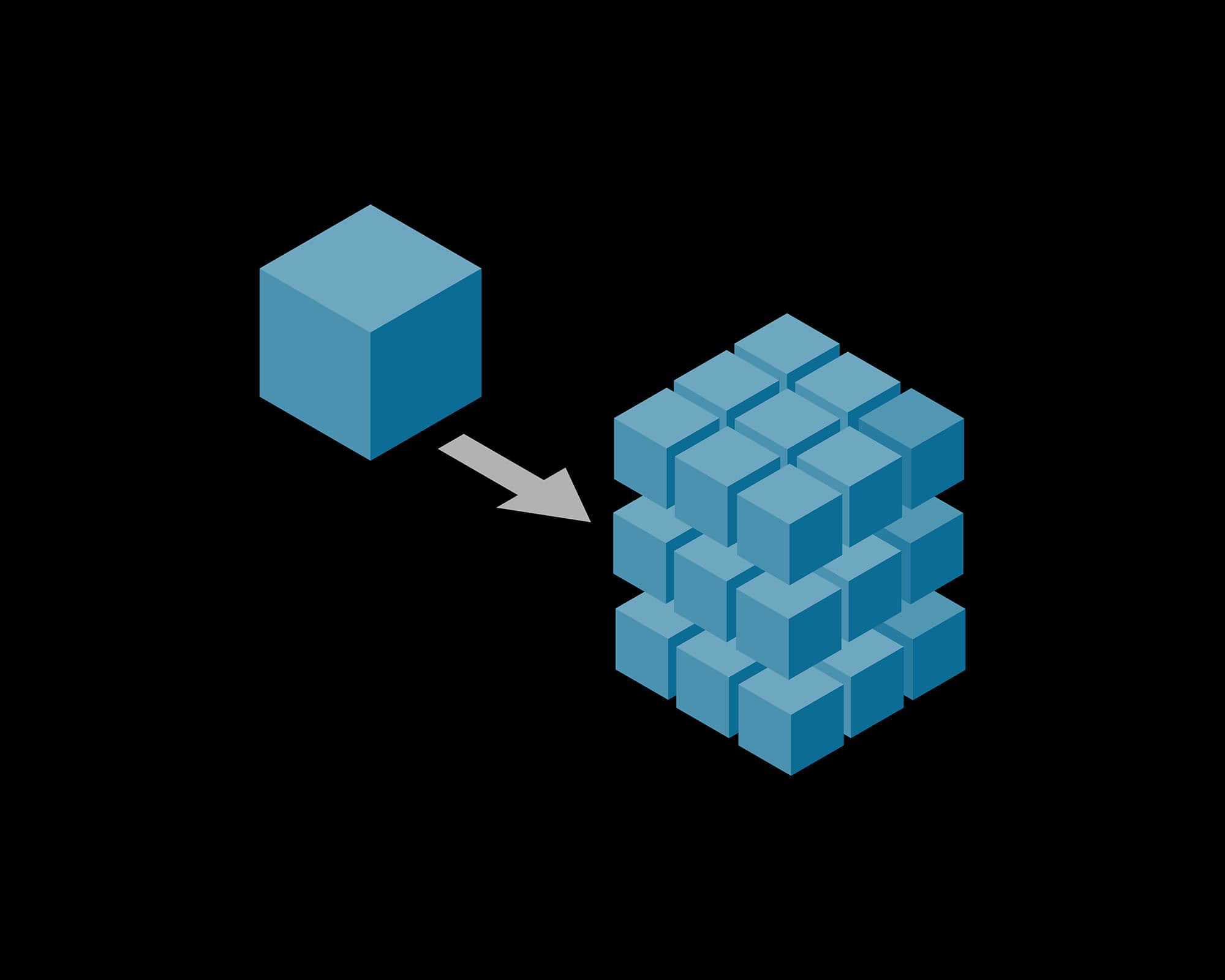 Telecommunication
Telecommunication
- Insights
- Technology
- Article
Micro-Frontend: Reshaping Enterprise Strategy and Customer Experience

From streamlined deployment to enhanced security, micro-frontend architecture is elevating how large corporations meet customer demands in banking, e-commerce, and beyond.
- A dynamic, modular structure that promotes independent team collaboration
- Significantly faster deployments without sacrificing stability
- Improved scalability and security features for sophisticated digital networks
- Tangible effects on operational efficiencies and user satisfaction
As organizations grow, their web applications often become large, monolithic systems that are tough to modify without inducing ripple effects throughout the whole platform. This is especially worse in competitive industries such as banking, finance, and e-commerce, where unexpected downtime or slow feature rollouts can have significant business implications.
Micro-frontends come to the rescue: by breaking down a large application into smaller, independent modules, development and updates can occur in parallel, with fewer interdependencies that can cause system-wide slow-downs or crashes.
In simpler terms, micro-frontends bring the concept of microservices—highly popular on the back-end—into the user interface realm. Each feature, or “micro-application,” operates somewhat autonomously but is seamlessly integrated into the overall user experience. This architectural style allows businesses to upgrade, swap, or add new features without redeploying an entire monolithic build, creating a more agile environment for innovation.
Why Top Executives Should Pay Attention
Speed and Agility
In a traditional monolithic approach, a single glitch in the codebase can derail an entire release cycle. The advantage of breaking down your platform into smaller front-end components is that you can pinpoint issues and fix them more quickly. This helps save time and lowers risks in important settings like a banking dashboard or financial trading app.
2. Streamlined Teamwork
Micro-frontend architecture supports the notion of independent squads: separate teams can own different modules, whether it’s a payment component, a loan application form, or a customer profile section. Since each squad is working on its own piece, development pipelines don’t get in each other’s way. A bug or a delay in one piece won’t destroy the whole platform.
3. Scalability and Security
Banks and financial institutions are huge targets for cyberattacks, and as such, secure development practices are paramount. With the use of micro-frontends, you can employ targeted security patches without bringing the whole system offline. When a single module needs a more restrictive content policy or a critical security patch, you can patch that area swiftly and separately. Furthermore, load balancing is more adaptable, with your infrastructure being capable of allocating resources where they’re needed, near real time.
4. Improved Customer Experience
A speedy, stable user interface can greatly enhance customer satisfaction. In banking and finance, where clients expect rich features and high response times, micro-frontends enable incremental improvements. For example, optimizing the login page or account overview doesn’t require re-testing or re-deploying the entire application; only the relevant module is affected. Faster updates lead to less downtime, ensuring customers can rely on steady, efficient service.
The Financial Sector’s Perspective: Concrete Benefits
Companies in the finance and banking industry are hard-pressed to balance complex regulatory requirements and rapidly changing customer expectations. Micro-frontends solve these challenges on a number of fronts:
- Reduced Risk of System-Wide Outages: Should a particular module fail—say, a tool that handles transaction history—the rest of the digital banking platform remains unaffected. Users can still deposit checks, transfer money, or open new accounts without interruption.
- Independent Deployment Cycles: In some financial institutions, small pipeline errors can halt critical functionality across the board. By decoupling modules (e.g., loan services, credit card statements, insurance policies), teams can work in parallel and deploy independently, leading to faster release cycles.
- Product Specific UX Optimization: Different banking products—savings, credit, investments—can have unique user interfaces tuned to specific customer needs. With micro-frontends, each product team can independently refine or redesign its interface while still maintaining a unified overall look.
- Future-Ready Architecture: As new financial services or compliance rules emerge, they can be integrated more smoothly. Instead of retrofitting a behemoth monolith, organizations can add or update modules to reflect the latest changes—be it a new interest rate feature or a compliance-related update.
- SuperApp Approach: MFE enables the SuperApp model by integrating various modules—such as rent tracking, Turkey’s mandatory earthquake insurance (DASK), and vehicle inspections—within a unified platform. Different teams can develop these modules independently, while Module Federation ensures a seamless, near-native experience, enhancing user engagement and satisfaction.
Given the volume of transactions and high stakes in the financial sector, the shift to micro-frontends is gradually becoming less of an option and more of a strategic necessity.
Industry giants like Spotify and Upwork have successfully adopted micro-frontend architectures, citing improved developer experience and faster feature releases. Similarly, DefineX has demonstrated the power of MFE through its collaboration with a European-based bank. By transforming the bank’s web application within its mobile app into a modular MFE structure, we enabled multiple modules to coexist seamlessly. This allowed teams greater deployment flexibility while leveraging shared packages and a unified caching layer—enhancing both performance and user experience.
Overcoming Common Challenges
No architecture is a silver bullet. While they offer many benefits, micro-frontends introduce:
- Coordination Overhead: While there are smaller teams that can be independent, there is the responsibility of ensuring a uniform user experience. Style guides, shared component libraries, and consistent design patterns become indispensable.
- Performance Implications:There are dependencies within individual modules as well. Without addressing it, the loading of numerous micro-frontends can create fat JavaScript bundles. Shared dependency or caching is done to avoid
- TestComplexity: When multiple teams update different modules simultaneously, traditional end-to-end testing can become more complicated. Continuous integration and advanced test automation systems are critical to maintaining overall quality.
- Documentation and Governance:Maintaining autonomous modules that also integrate smoothly requires clear, centralized guidelines. Standardized deployment procedures, analytics processes, and governance practices minimize friction and ensure consistency across the entire system.
Best Practices for a Smooth Transition
- Set Clear Boundaries: Define where one micro-frontend begins and another ends. Overlapping responsibilities can increase confusion and reduce the benefits of modular architecture.
- Adopt a Shared Component Library: Maintaining a consistent user experience across different modules demands a robust design system. Shared libraries reduce duplication and ensure visual alignment.
- Prioritize Security and Governance: Especially in regulated industries like finance, every module should adhere to strict security standards. Periodic code reviews, vulnerability scans, and rigorous testing protocols are essential.
- Leverage Parallel Development: Encourage smaller, independent squads to own their pieces of functionality. Provide them the autonomy to pick tools, frameworks, or libraries that best serve their feature needs—without overcomplicating cross-module dependencies.
- Performance Monitoring: Invest in monitoring and analytics for each module to identify bottlenecks quickly. Real-time dashboards help pinpoint potential issues before they escalate.
A Future-Proof Approach to Enterprise Agility
Adopting micro-frontends is more than just a technical upgrade; it’s a strategic move that aligns digital innovation with corporate objectives. For C-level executives and decision-makers, the payoff is clear:
- Faster Go-to-Market: Each module can roll out new features on its own schedule, accelerating time-to-market for critical initiatives.
- High Availability: With a distributed structure, a failure in one module does not derail the whole system, ensuring continuity and uptime in critical use cases—like loan applications, insurance claims, or large-scale e-commerce orders.
- Robust Security: Bandedpatches and updates minimize the window of vulnerability. In case a security flaw is found in the authentication module, for example, it can be repaired instantly without taking down the rest of the platform.
- Long-TermGrowth: As evolving business needs require, new micro-frontends can be added or existing modules enhanced without rebuilding the entire application. This forward-looking architecture allows continuous innovation.
Final Thoughts: Positioning for Long-Term Success
The micro-frontend paradigm stands at the intersection of modern software architecture and practical business requirements. In industries where uptime, security, and user satisfaction are non-negotiable, it offers a well-organized yet adaptable approach to scaling. By empowering smaller teams to independently develop and deploy front-end modules, large enterprises find themselves with a powerful combination of agility, stability, and user-centric design.
For any organization aiming to remain competitive in the digital era—be it in banking, e-commerce, or insurance—the benefits of micro-frontends are too significant to overlook. As the technology matures, it’s becoming a cornerstone of digital transformation strategies, proving that decoupled, independently deployed user interface components are not just a trend, but a robust blueprint for sustainable growth and innovation.

Explore deep-dive content to help you stay informed and up to date
 Telecommunication
Telecommunication
 Telecommunication
Telecommunication
Reduce Your Telco Product Catalog Complexity Through Product Rationalization
Read now Financial Services
Financial Services
Embedded Finance: The Dilemma for Incumbent Banks
Read now Financial Services
Financial Services